*NURSING > EXAM REVIEW > Chamberlain College of Nursing NR 283NR 283 Patho Exam 1 Concept Review. (All)
Chamberlain College of Nursing NR 283NR 283 Patho Exam 1 Concept Review.
Document Content and Description Below
NR 283 Pathophysiology Exam 1 Concepts to Review Cellular Biology/Cellular Adaptation/Cellular Injury Chapter 1 and 3 8 functions of cells o Movement – muscle cells generate force to produce mot... ion o Conductivity – As a response to a stimulus. This is the chief function of nerve cells o Metabolic Absorption – take in and use nutrients o Secretion – with mucous gland cells – absorb substances to be secreted elsewhere o Excretion – Rid themselves of waste products o Respiration – Absorb oxygen to transform nutrients to energy o Reproduction – New cells produced to replace those lost o Communication – vital for cells to survive as a society (think Osmosis Jones movie) ATP • ATP or adenosine triphosphate plays a major role in that • ATP is a molecule that stores and transfers energy for the functioning of our cells • Specifically it is used in the synthesis (creation) of molecules, muscle contractions, and active transport Mitochondria the main job of the mitochondria is that it produces most of the cell’s ATP or energy. Cellular metabolism There are 2 parts to metabolism: • Anabolism • The energy using process • Catabolism • The energy releasing process Ribosomes Ways of cellular communication Cellular respiration Anaerobic and aerobic Sodium/Potassium pump-function, what happens when it fails?, need ATP for this… Cellular adaptation-hypertrophy, atrophy, hyperplasia, metaplasia, dysplasia (know examples, pathologic, physiologic, hormonal, compensatory) Reversible/irreversible injury Apoptosis vs. Necrosis Apoptosis (“dropping of”) is an important distinct type of cell death that differs from necrosis in several ways. Apoptosis is an active process of cellular self-destruction called programmed cell death and is implicated in both normal and pathologic tissue changes Necrosis--Cellular death eventually leads to cellular dissolution, or necrosis. Necrosis is the sum of cellular changes after local cell death and the process of cellular self-digestion, known as autodigestion or autolysis Types of Necrosis (liquefactive, coagulative, fat, gas gangrene, dry gangrene, wet gangrene caseous) Dry gangrene: Slow spreading, tissue becomes dry, brown or black, it shrinks and wrinkles. Wet gangrene: Area is cold, swollen, pulseless, moist, black and a foul odor production Coagulative necrosis. Occurs primarily in the kidneys, heart, and adrenal glands; commonly results from hypoxia caused by severe 103ischemia or hypoxia caused by chemical injury, especially ingestion of mercuric chloride. Coagulation is a result of protein denaturation, which causes the protein albumin to change from a gelatinous, transparent state to a firm, opaque state .The area of coagulative necrosis is called an infarct. [Show More]
Last updated: 1 year ago
Preview 1 out of 16 pages
.png)
Reviews( 0 )
Document information
Connected school, study & course
About the document
Uploaded On
Oct 04, 2021
Number of pages
16
Written in
Additional information
This document has been written for:
Uploaded
Oct 04, 2021
Downloads
0
Views
78


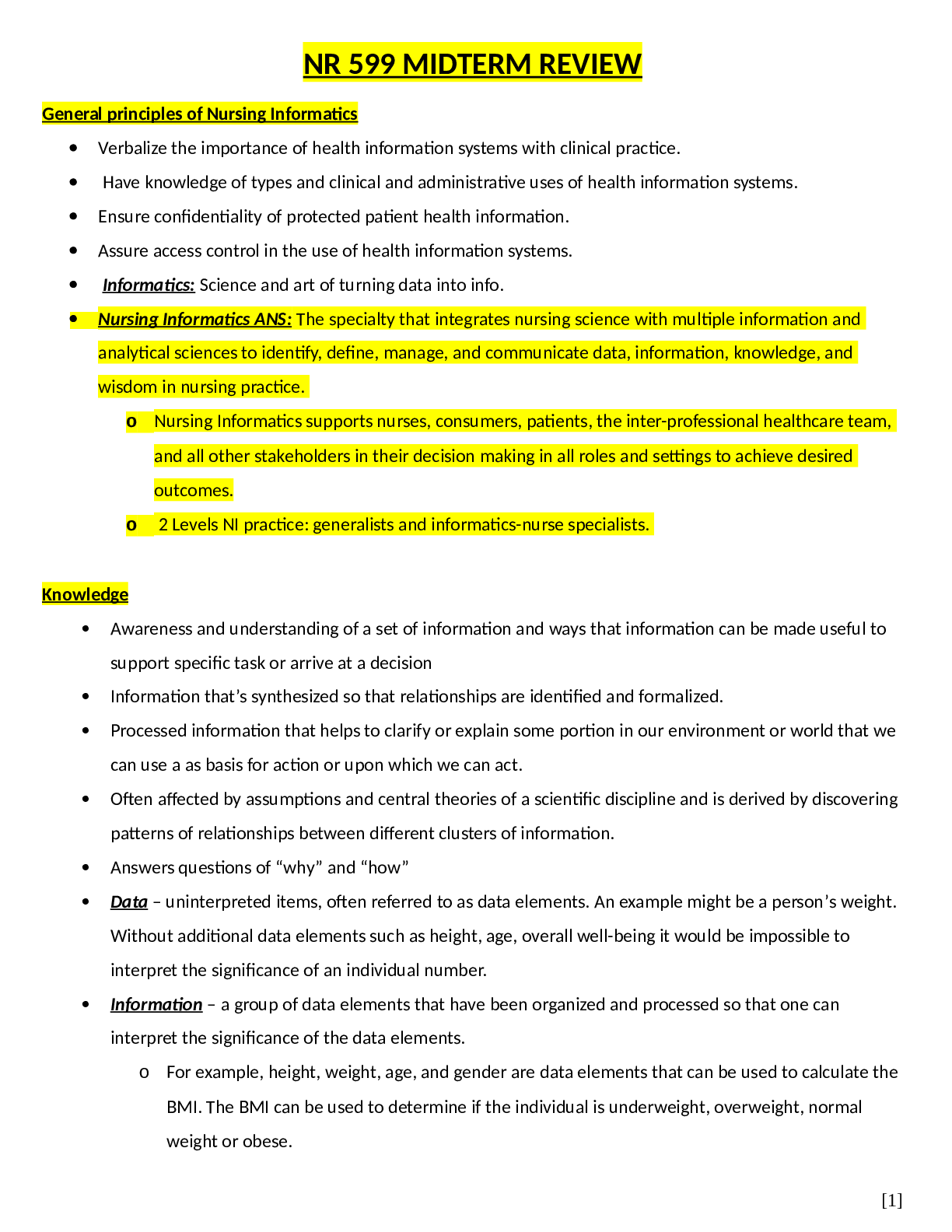
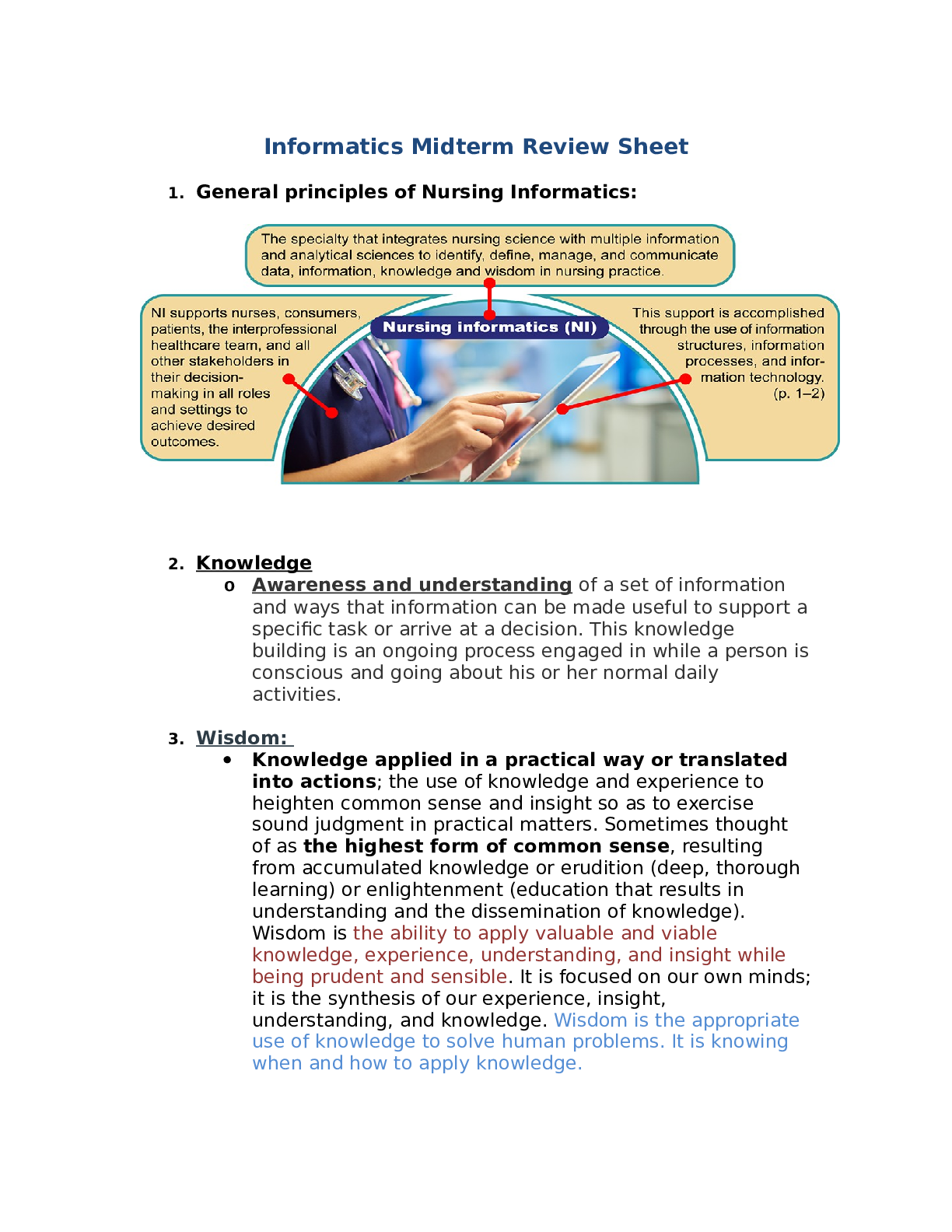
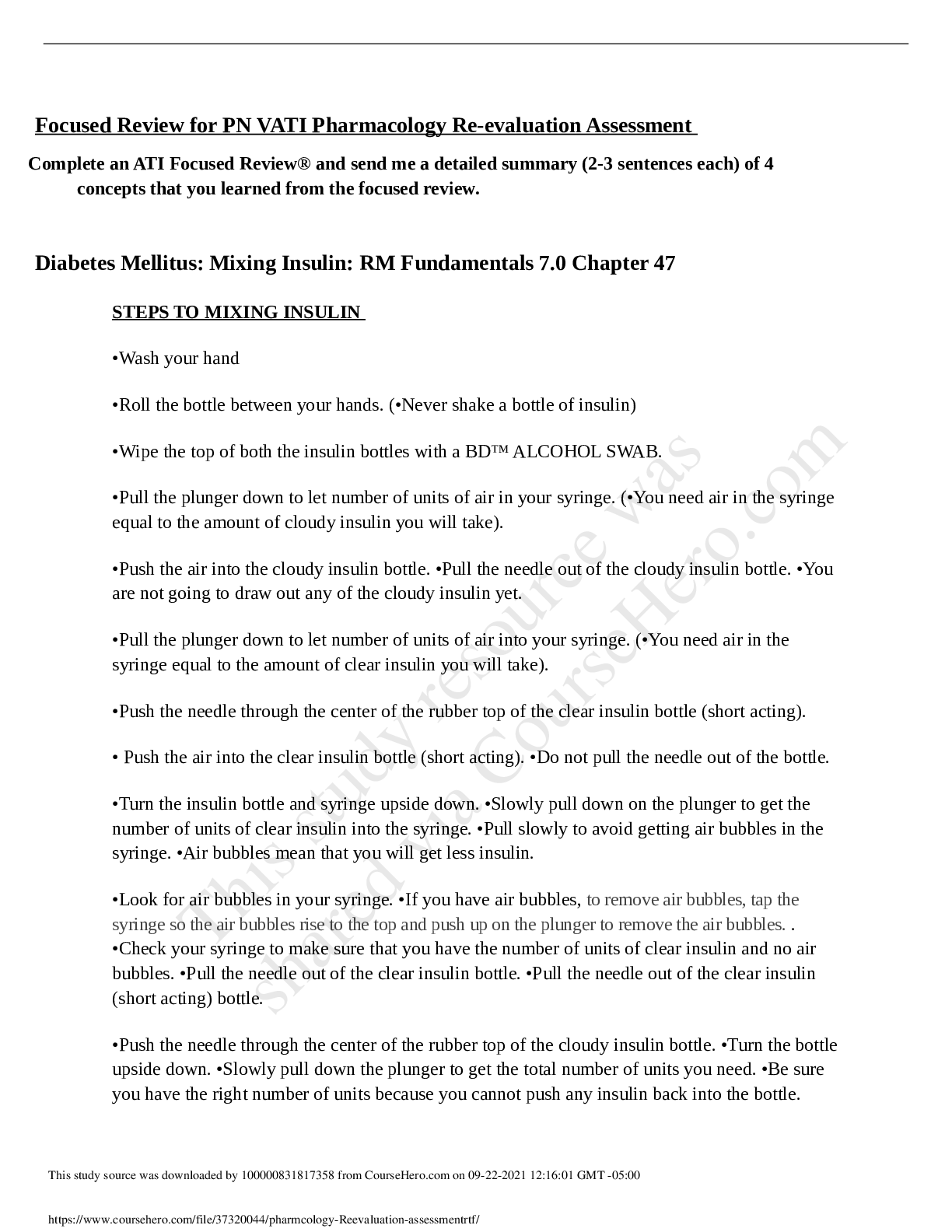
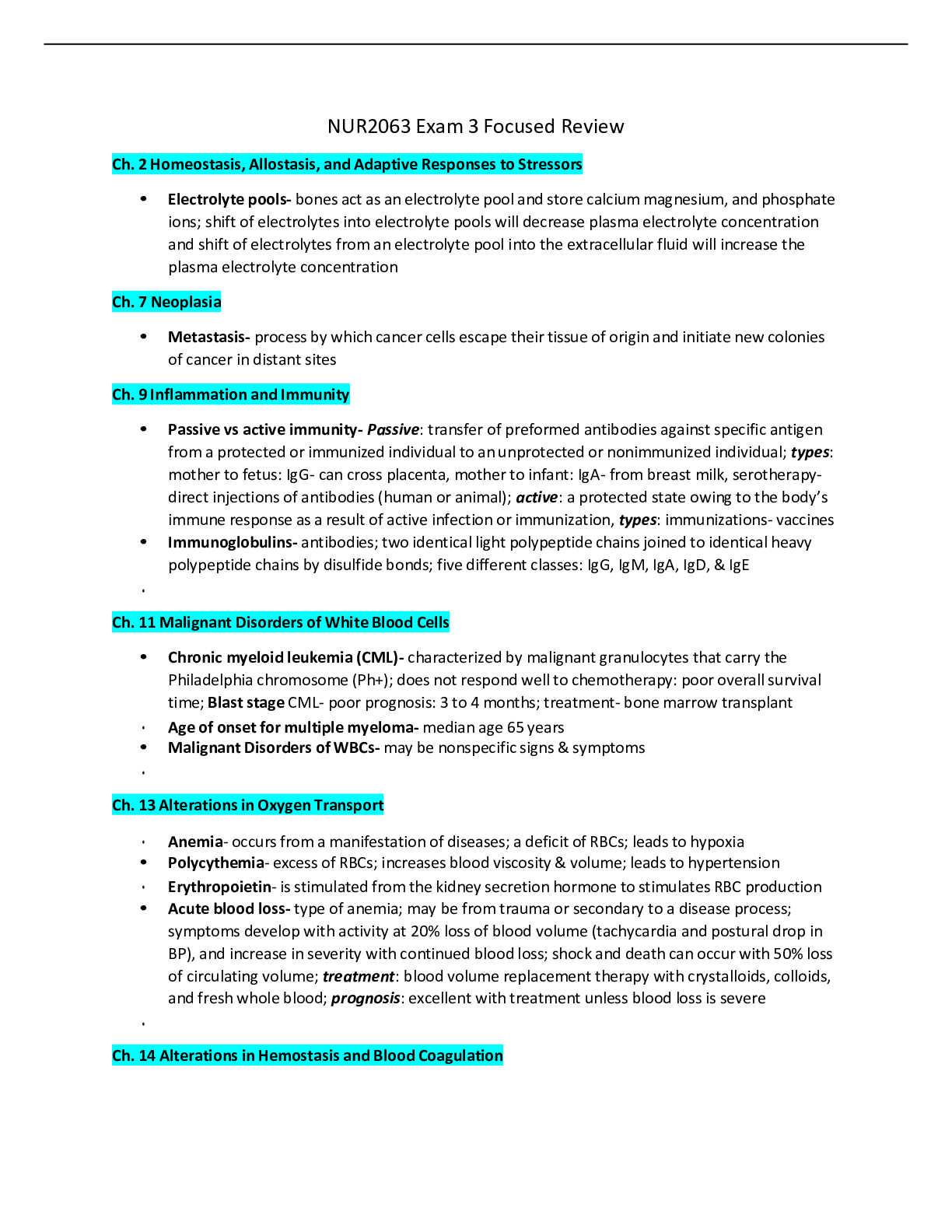
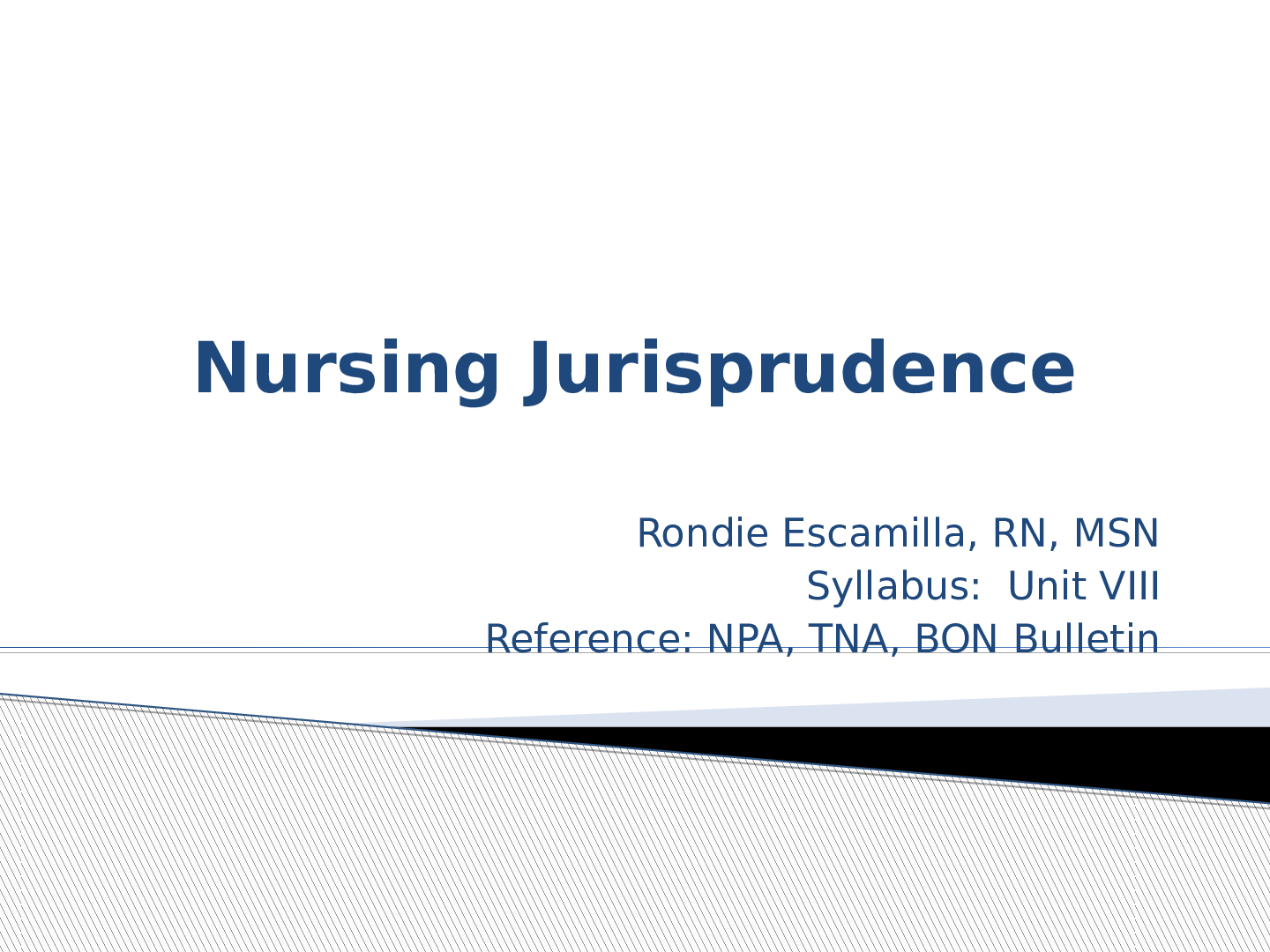
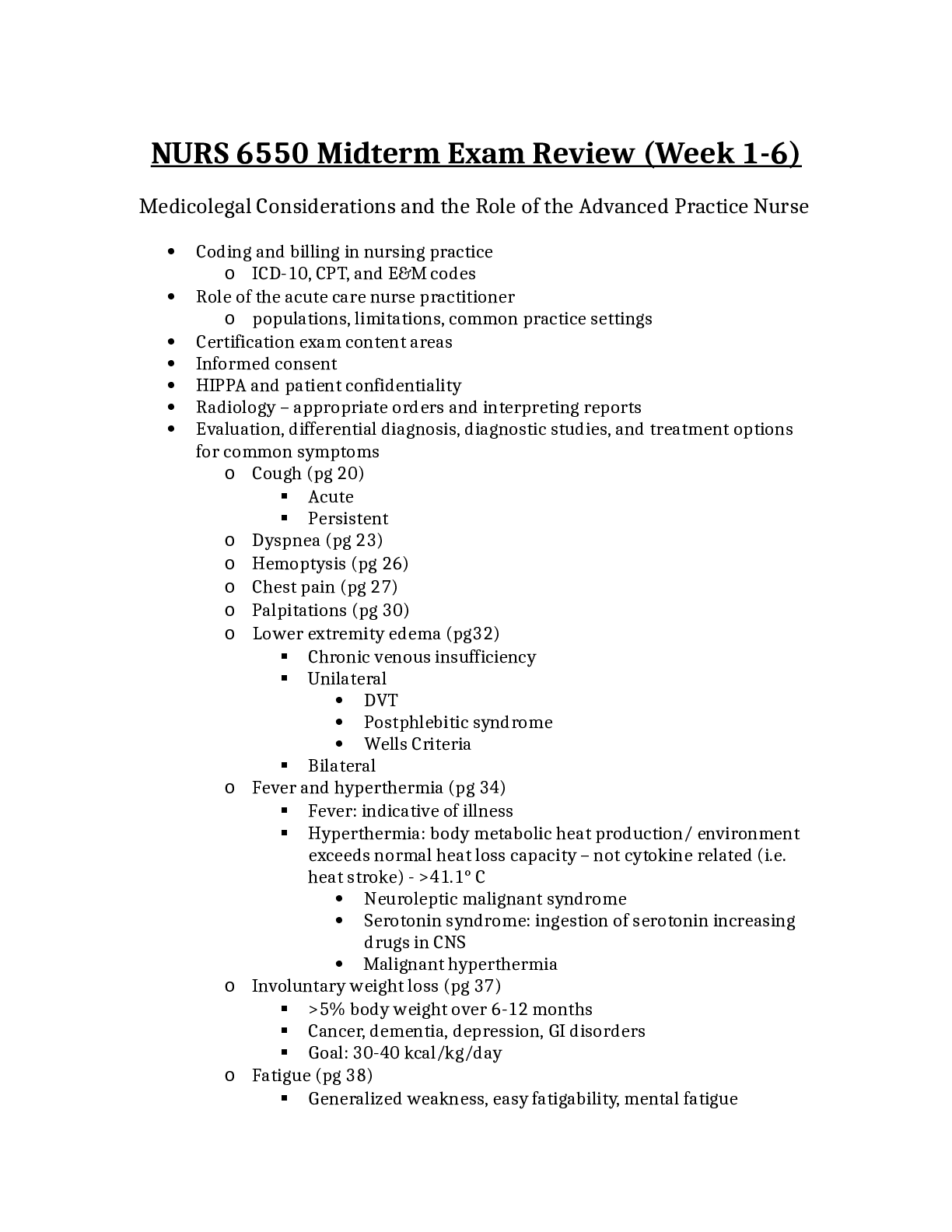
.png)
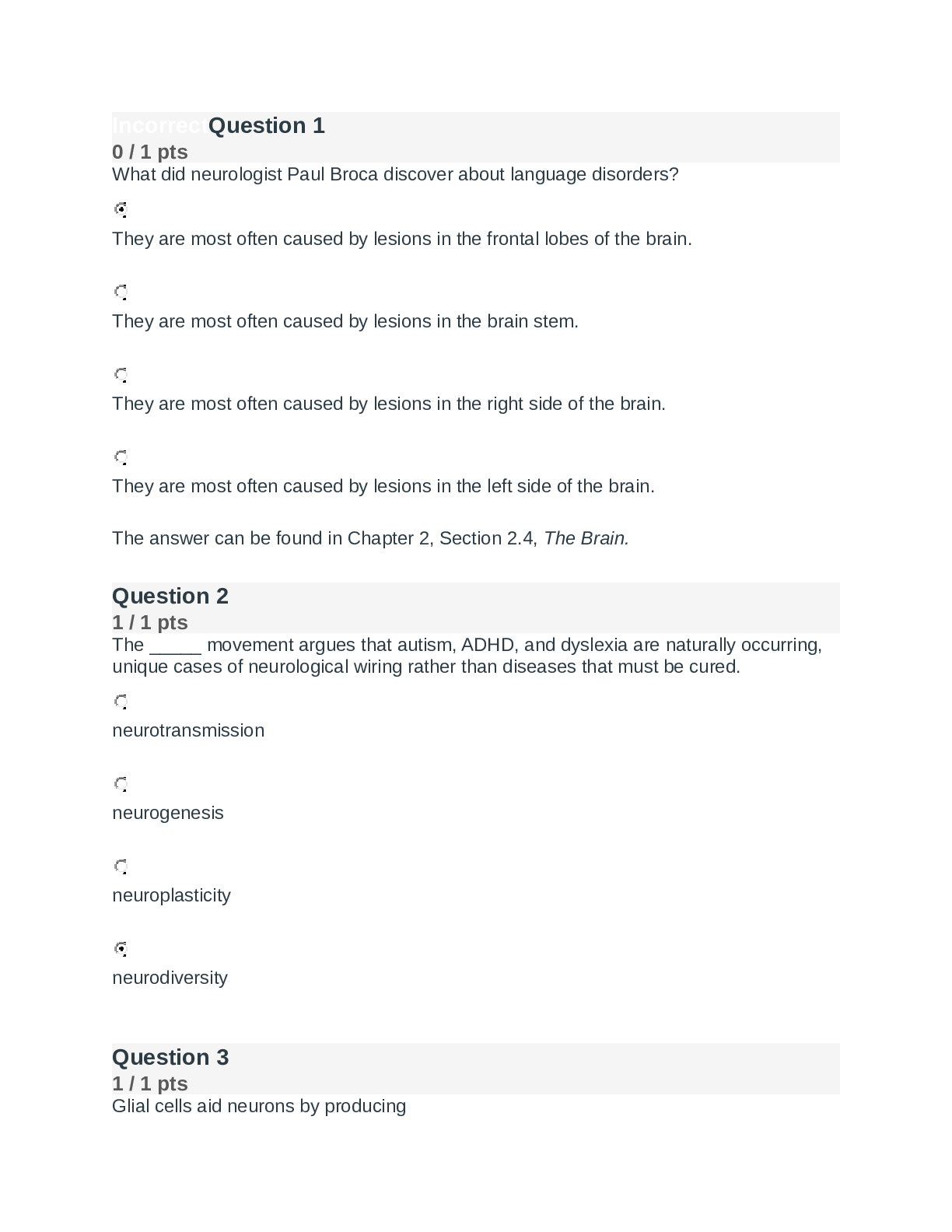
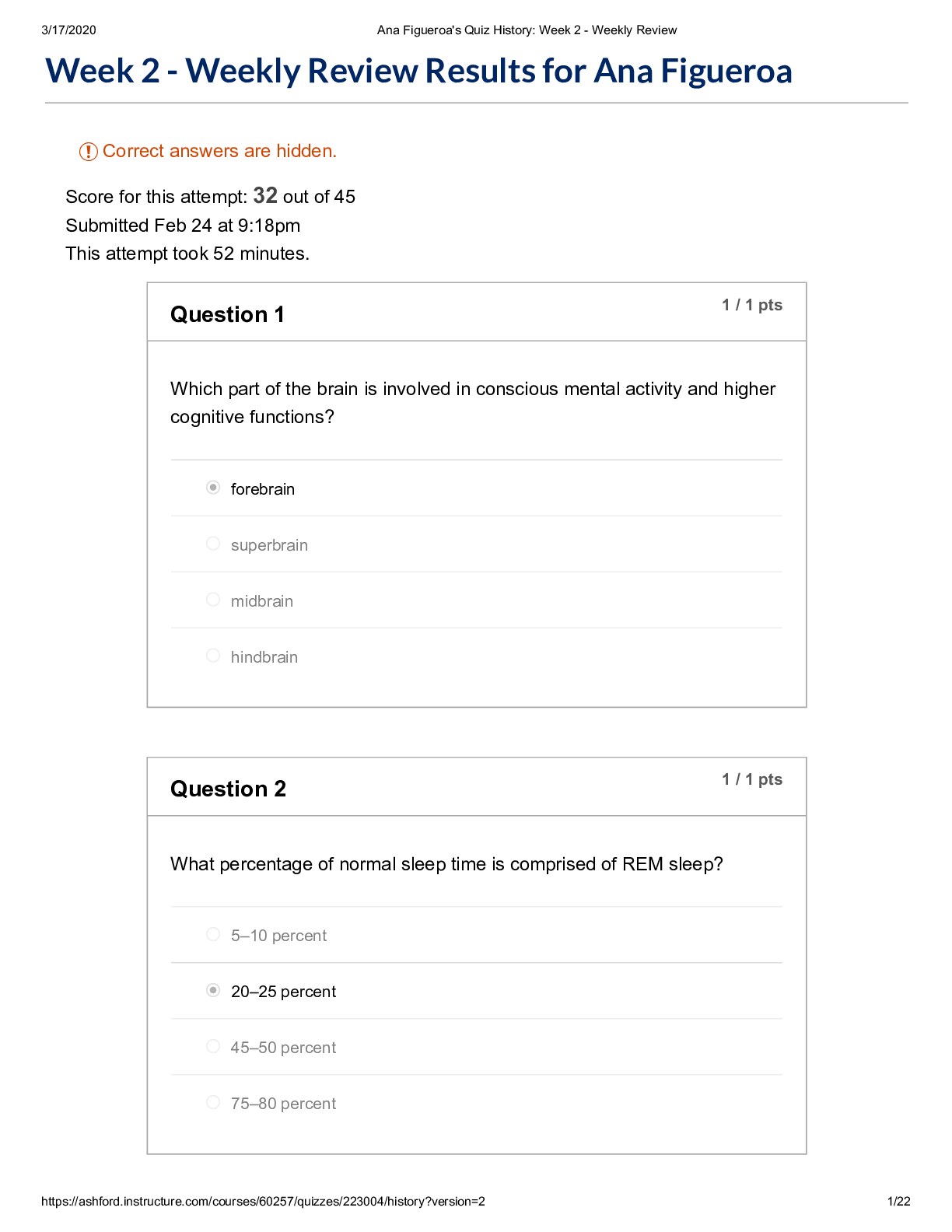
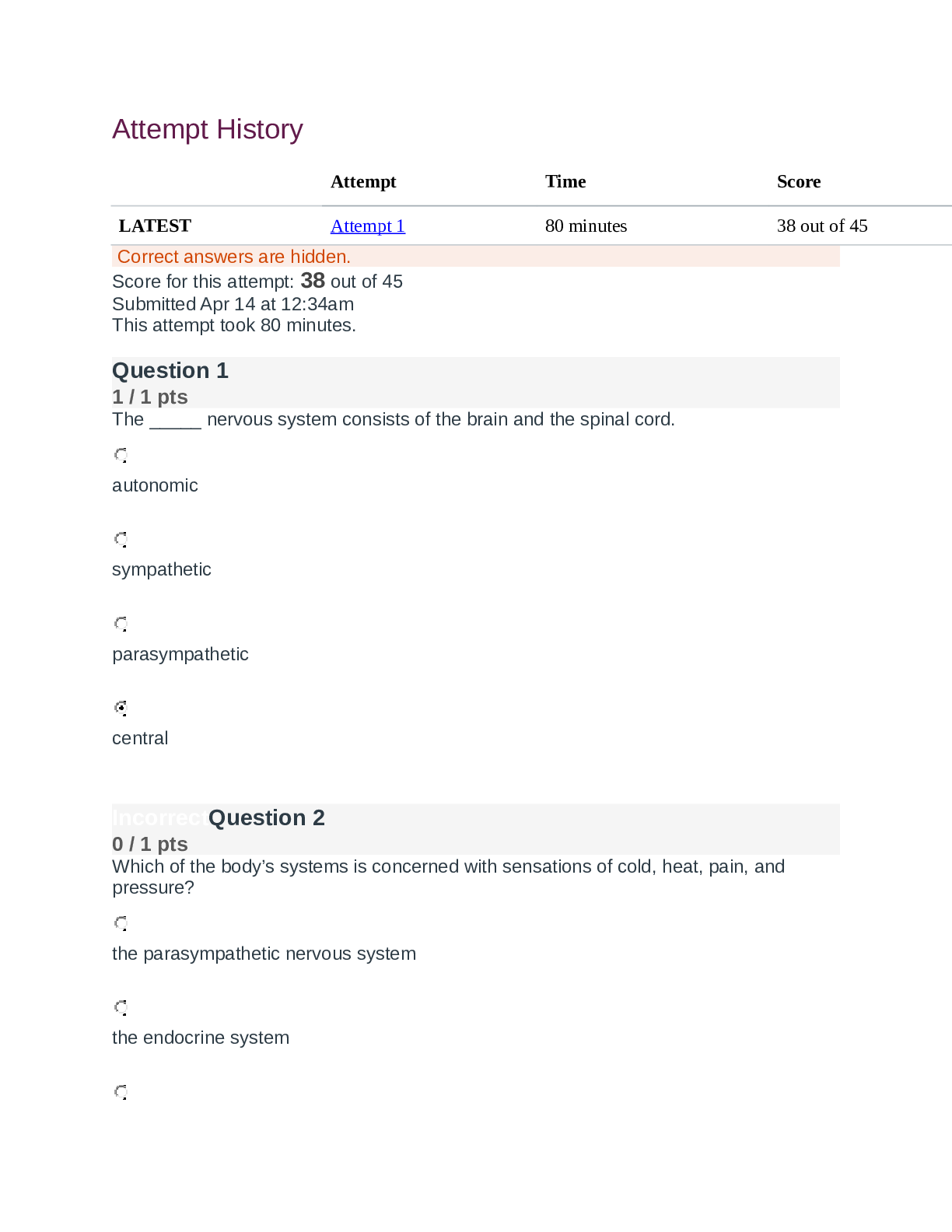
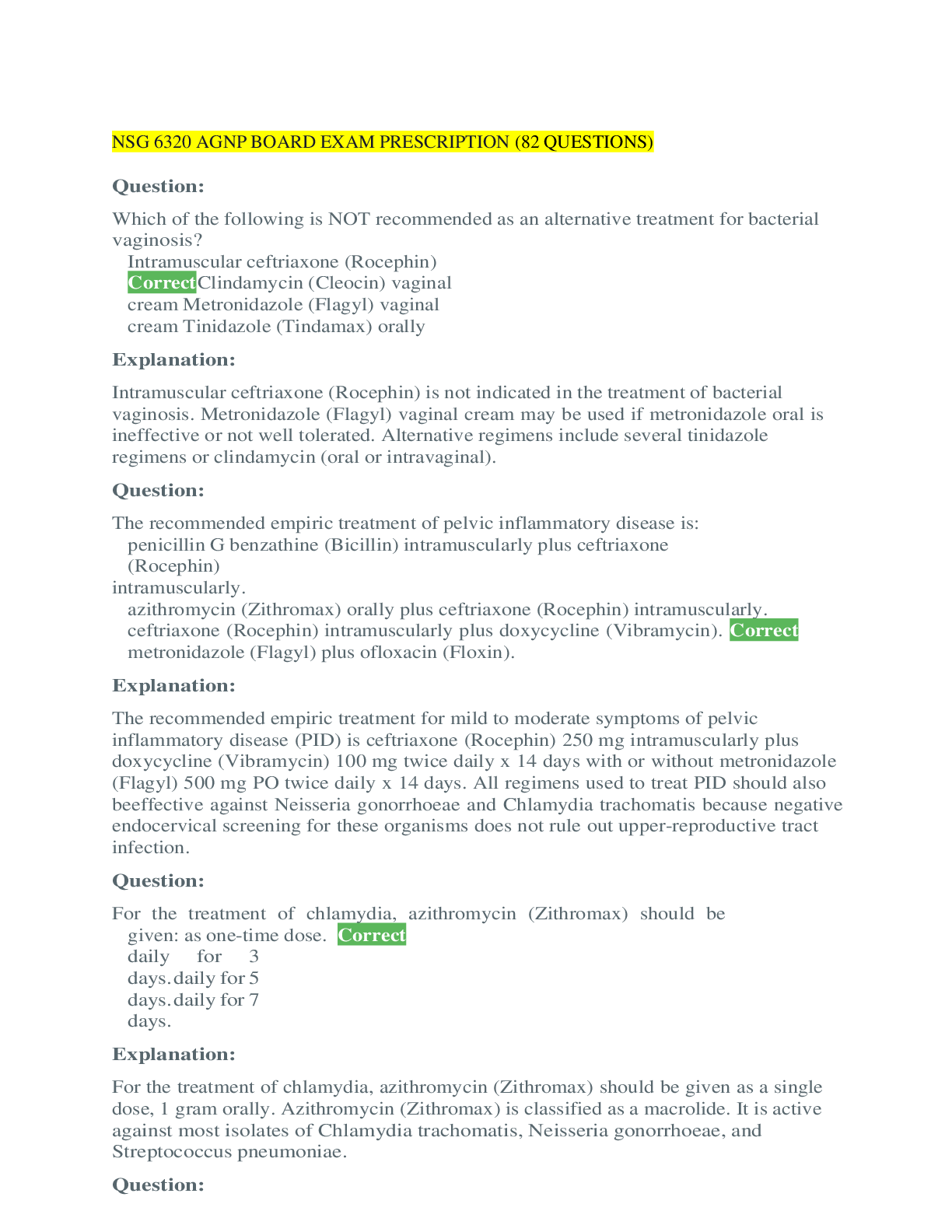
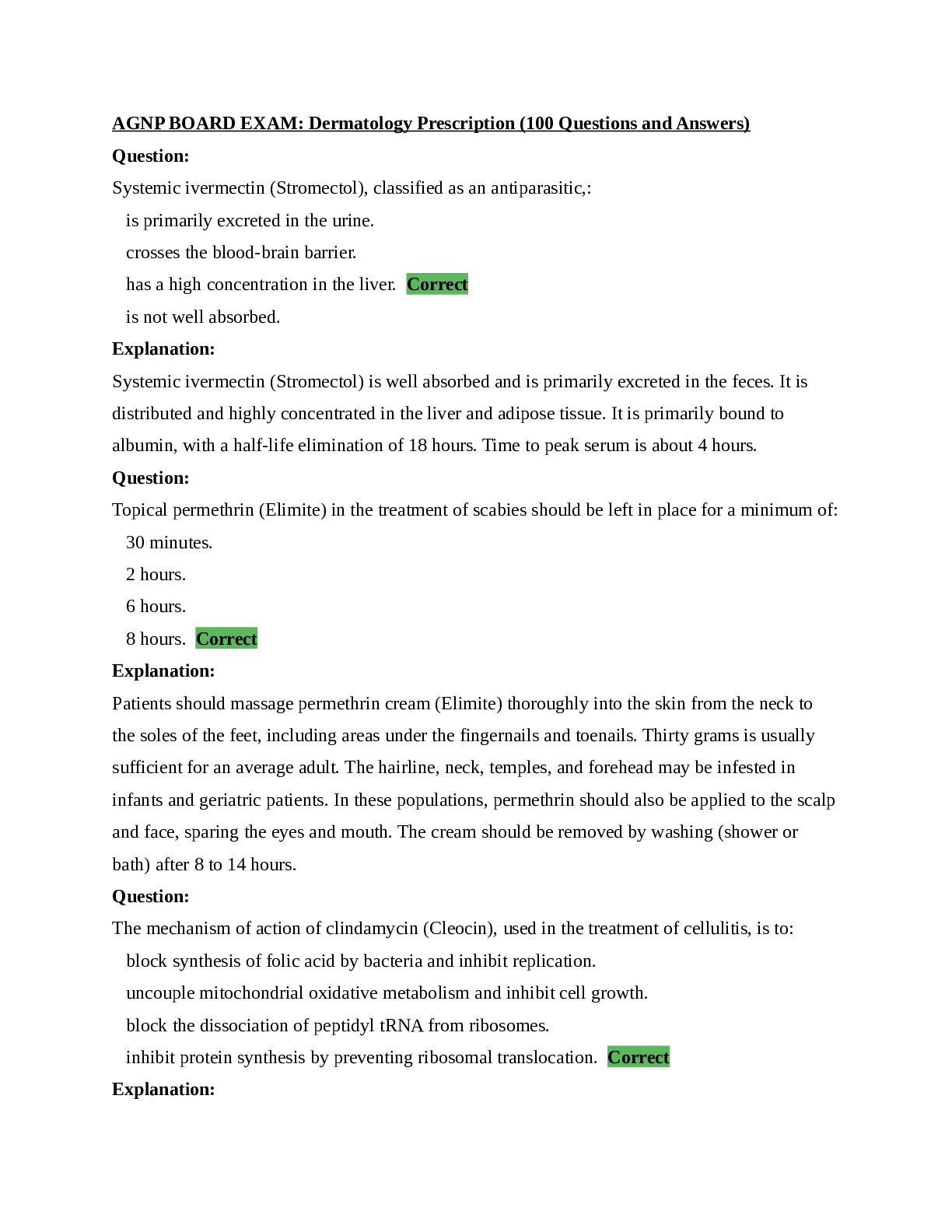
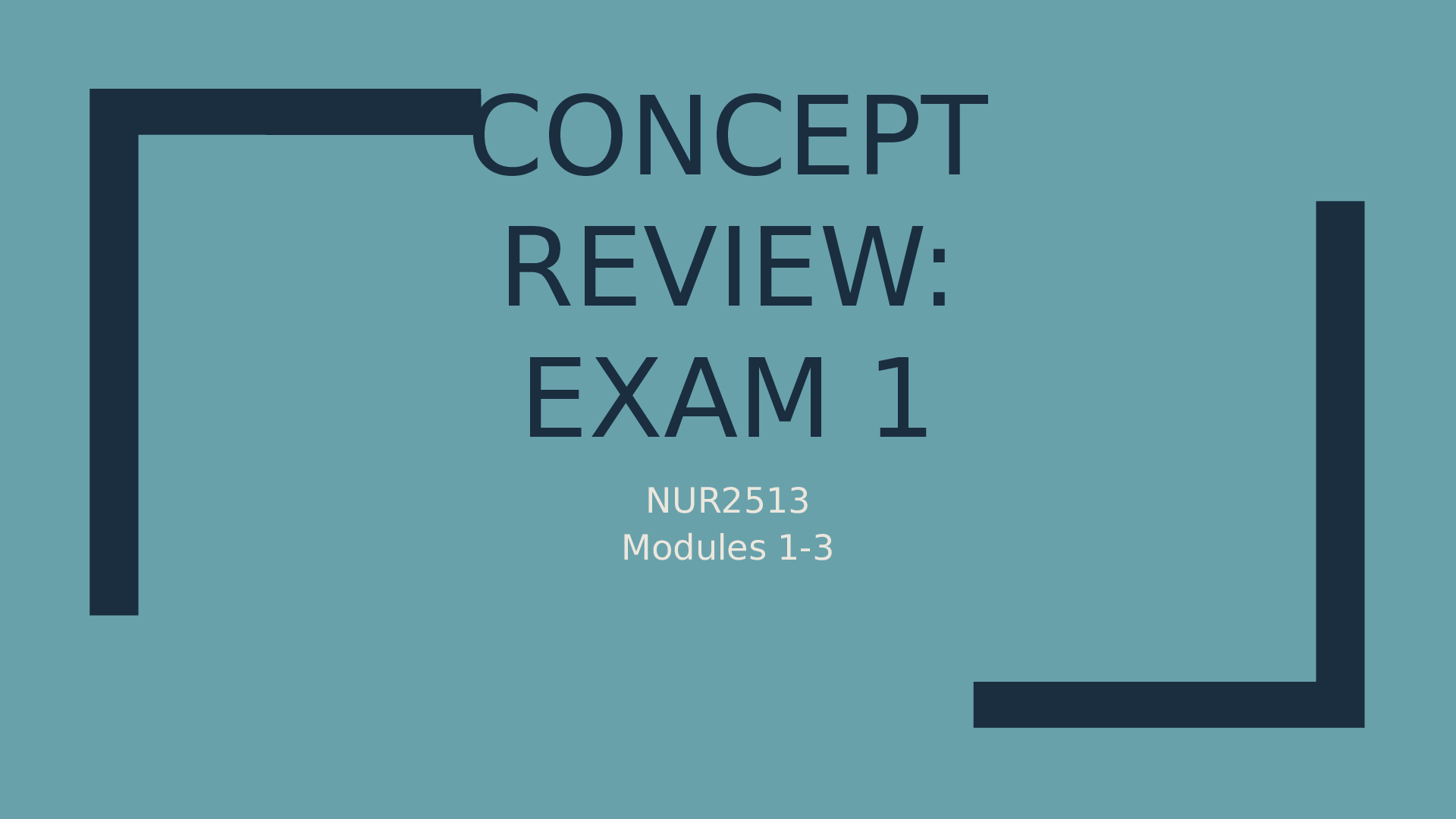
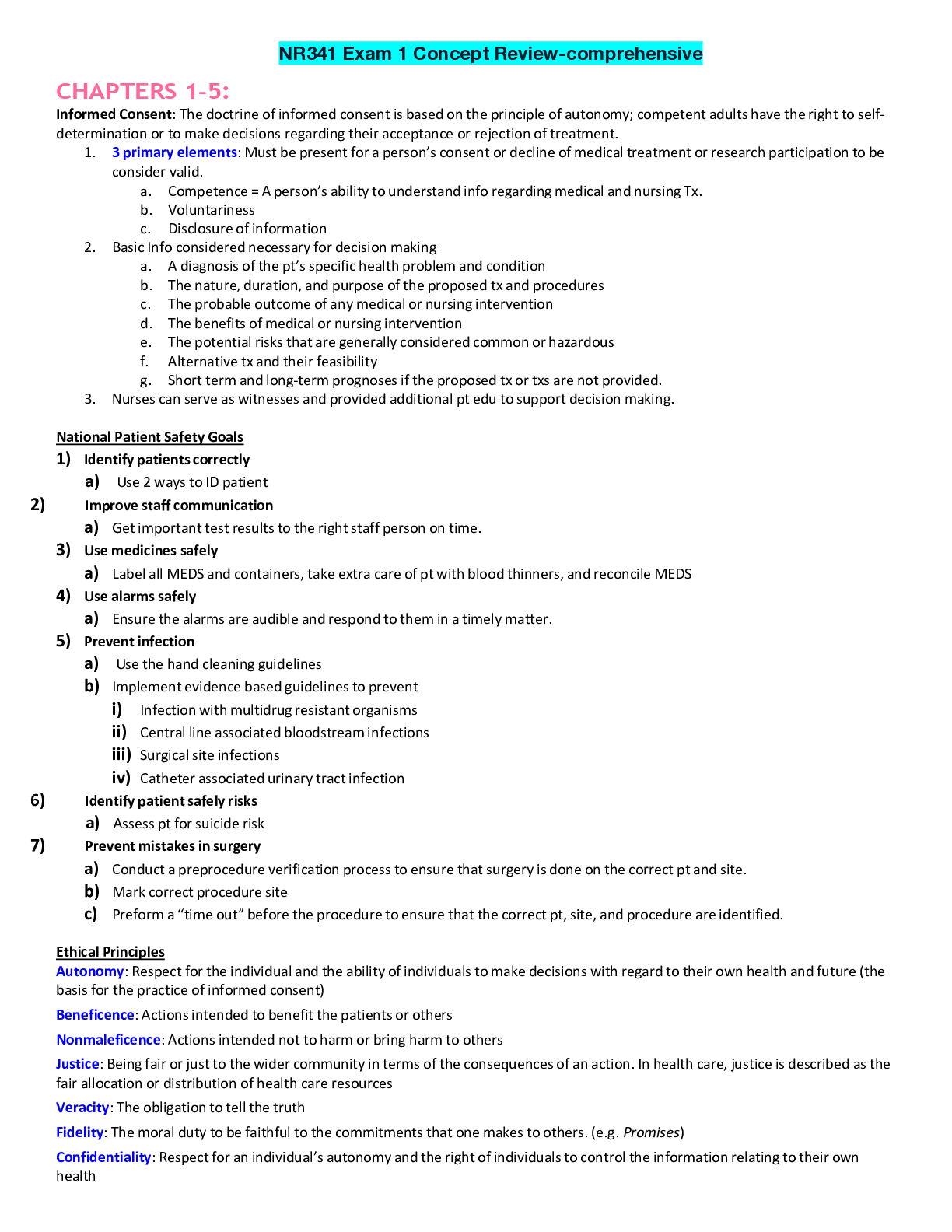
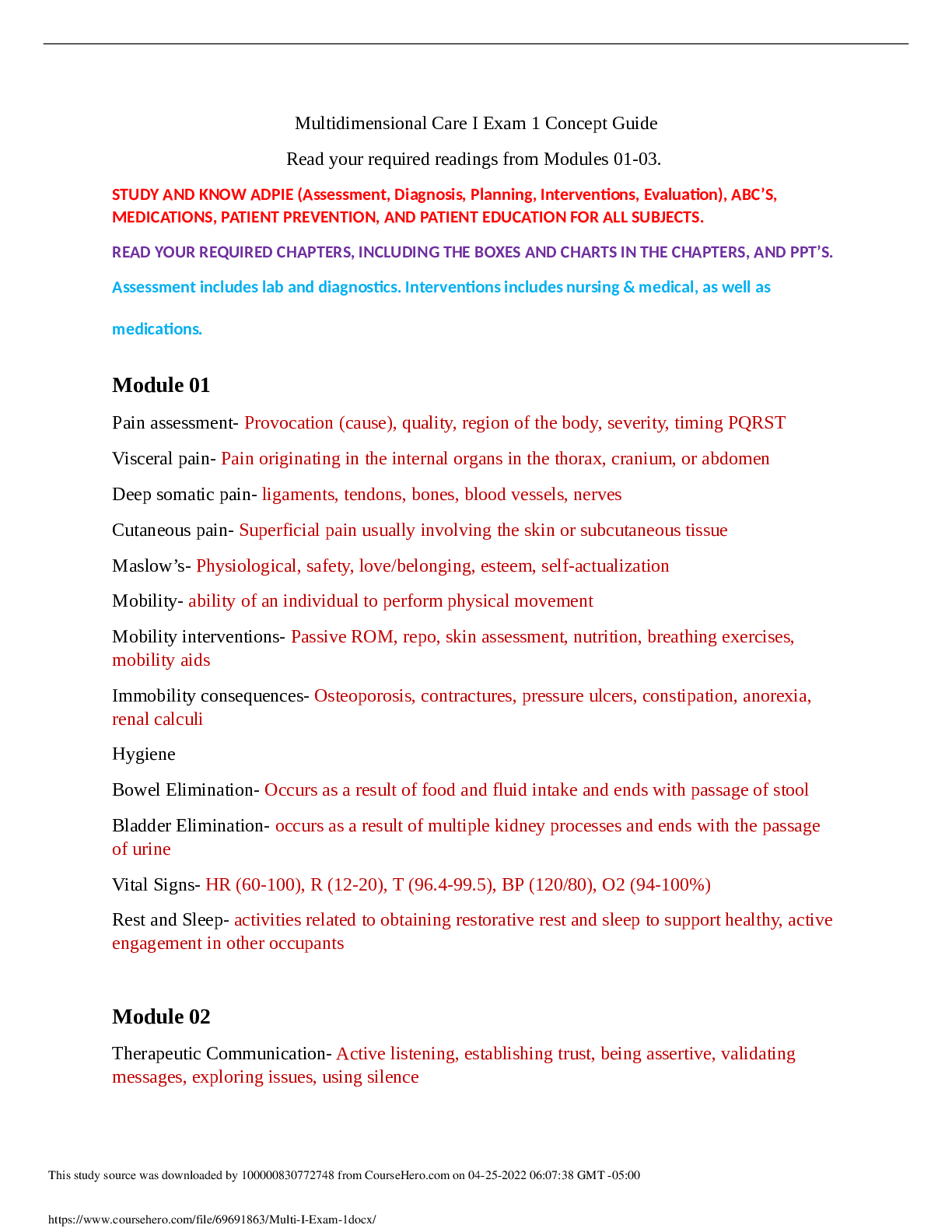
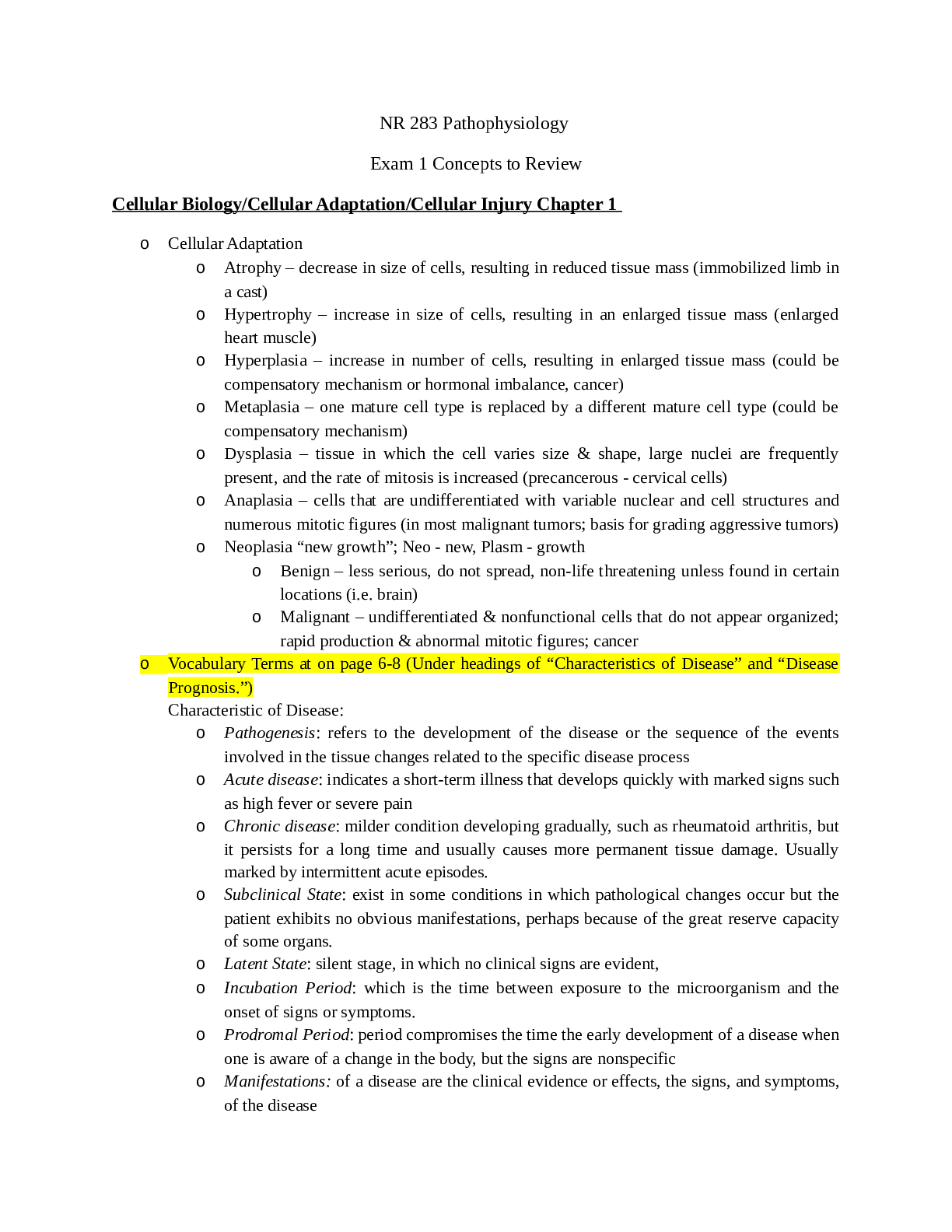


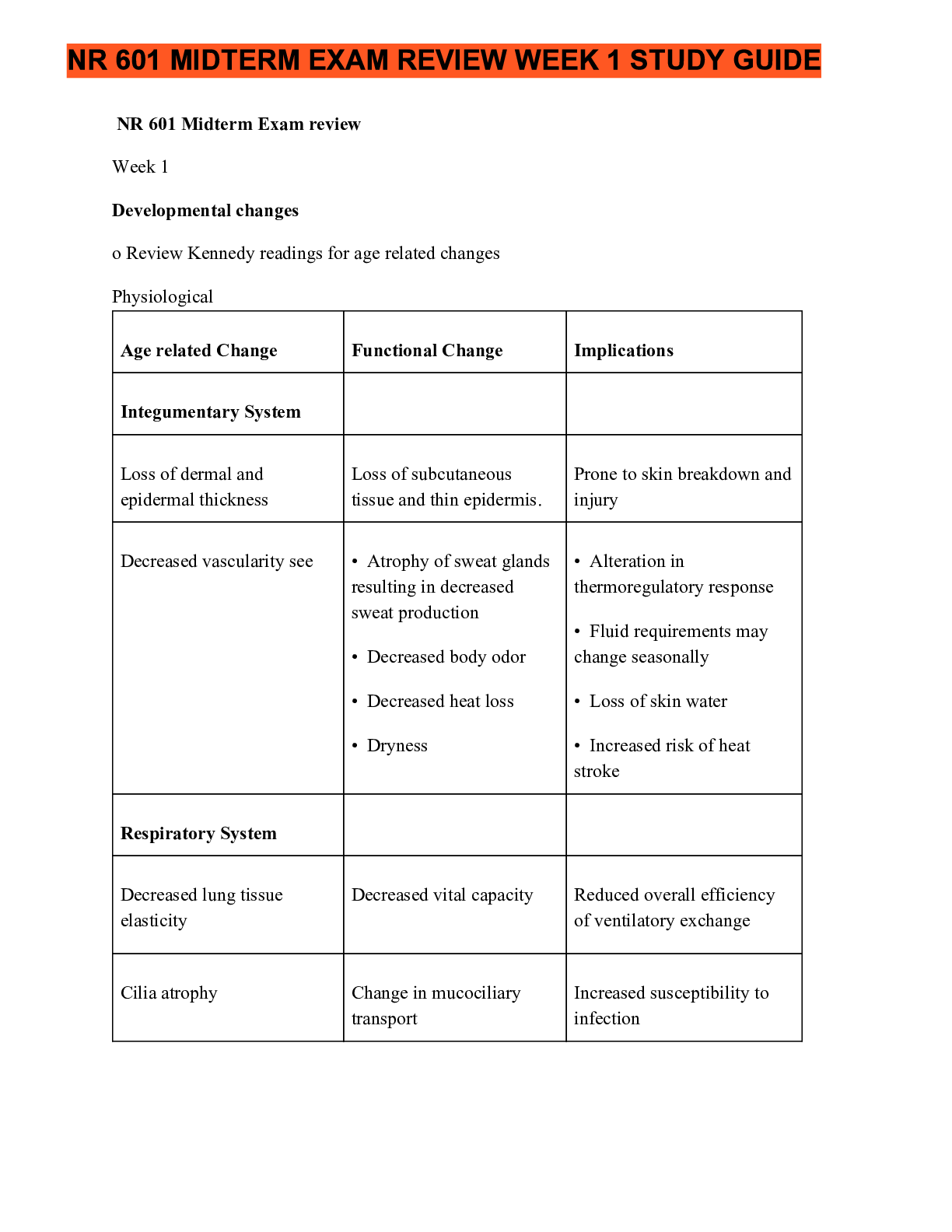
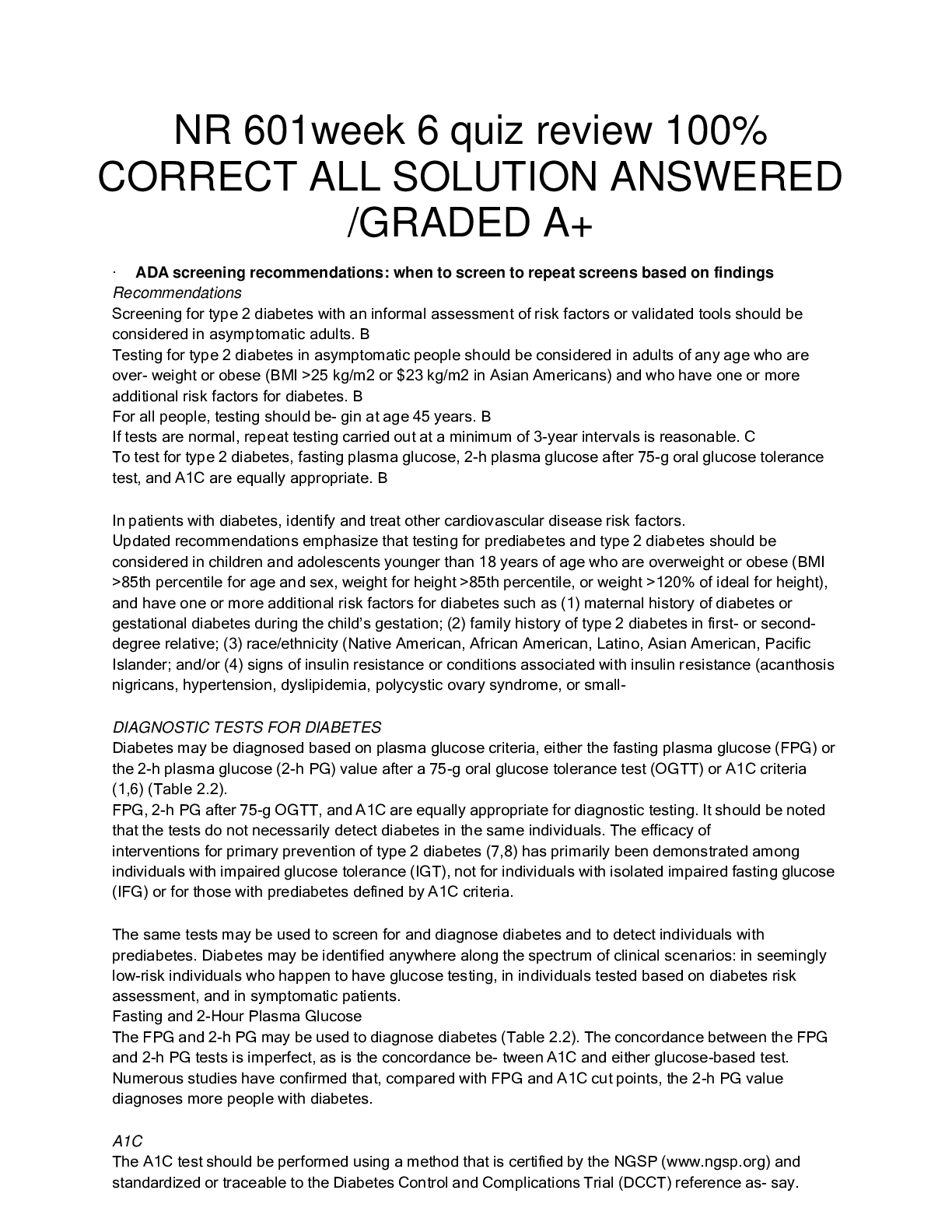
.png)

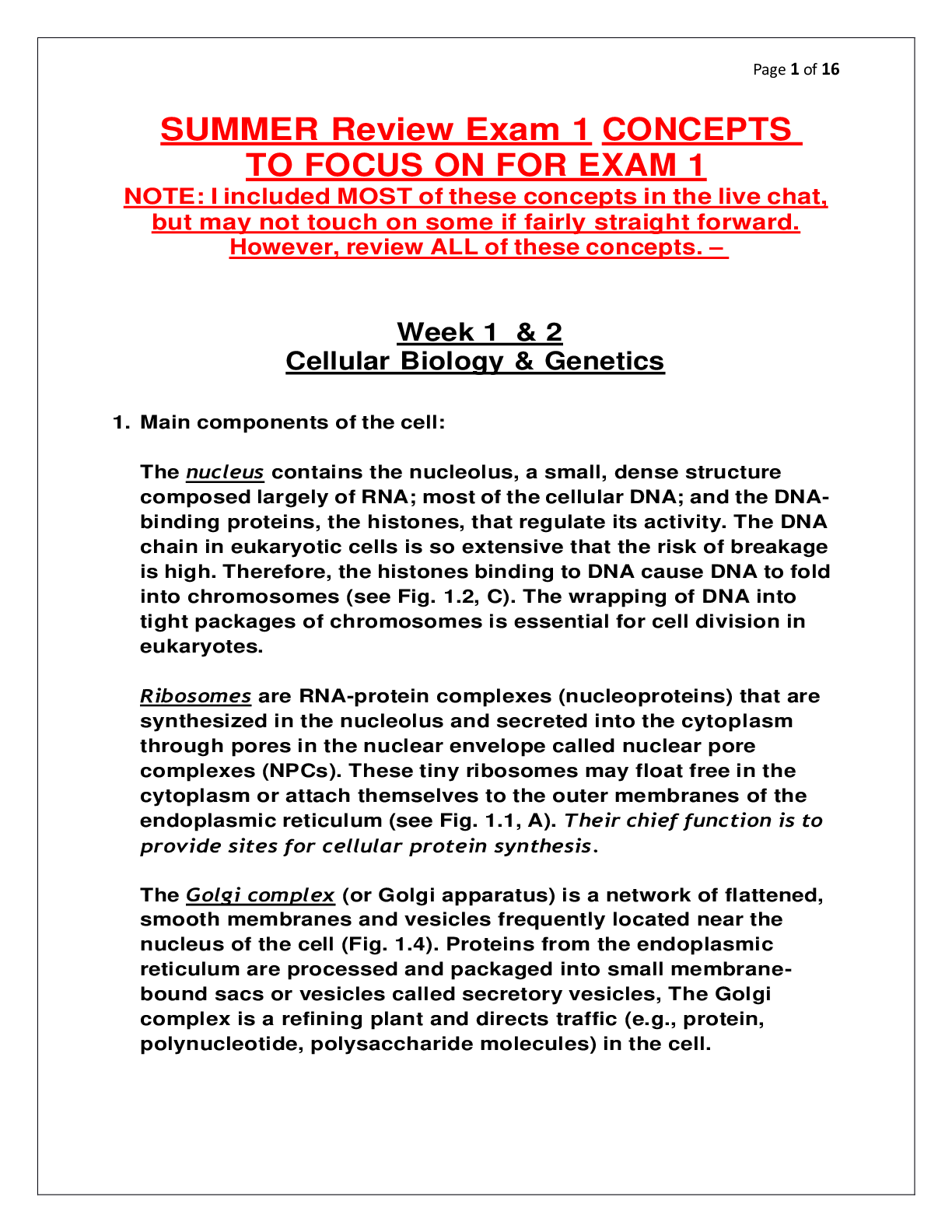

 - Already Graded A.png)

